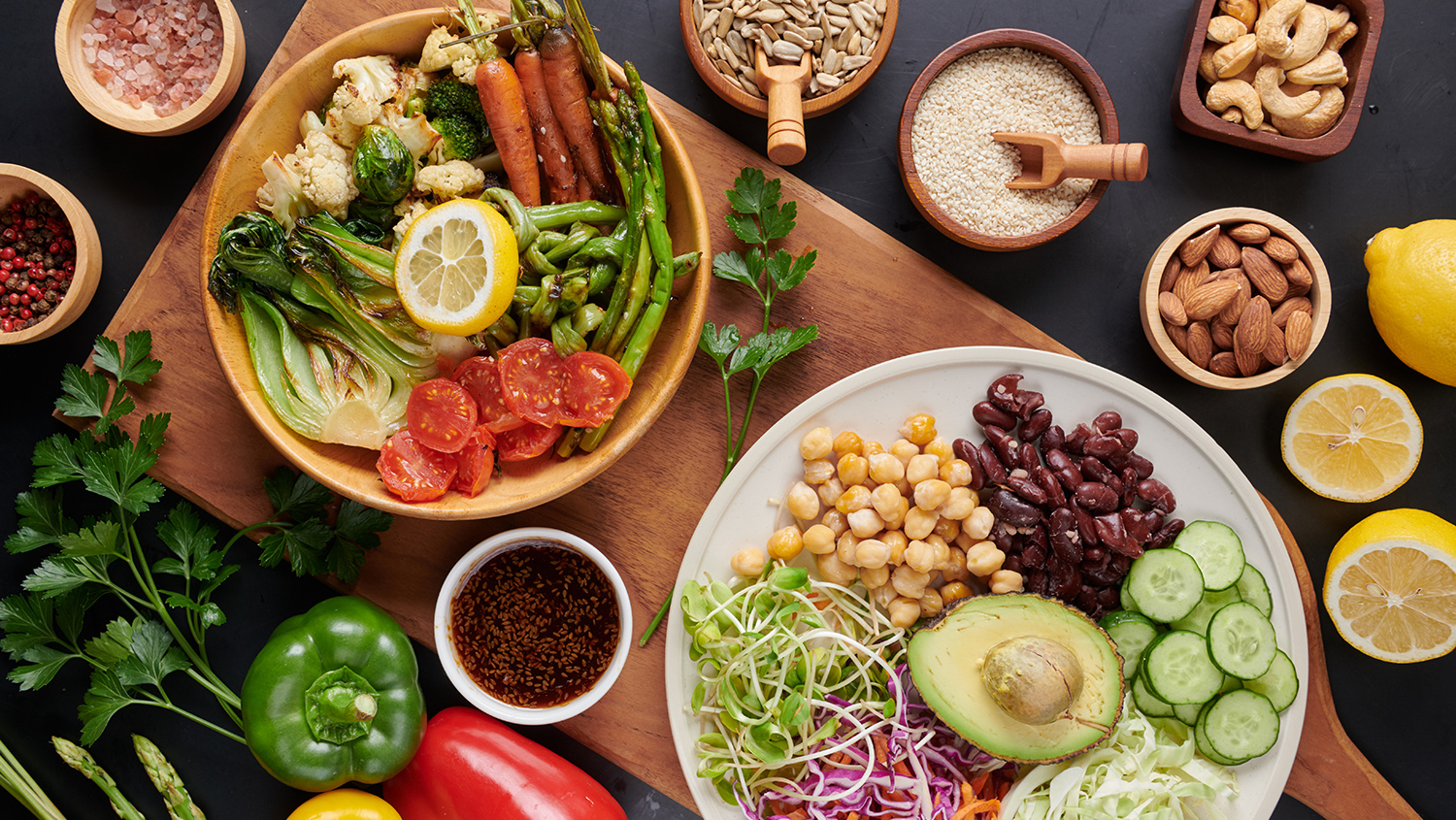Revitalize Your Plate: Nutrition Tips for a Healthier New Year

We’ve made it around the sun another 12 months and as 2024 gets underway, it’s time, once again, to think about how we can make this new year a little better.
Catherine Hill and Christina Chapman, doctoral students in the Department of Food, Bioprocessing and Nutrition Science, say there’s no time like the present to make a New Year’s resolution to eat a little healthier this year. Alumnae of the department’s undergraduate nutrition program, Hill and Chapman believe small changes in your diet can lead to big benefits.
“A healthy lifestyle incorporates habits and behaviors that are sustainable and provide you with balance. Eating nutritious foods is one ingredient of that healthy lifestyle,” says Hill, who is a registered dietitian and the nutrition programs manager for the Department of Agricultural and Human Sciences, where she heads up the Dinah E. Gore Teaching and Research Kitchens. “As with every new year, January can feel like the time to make drastic dietary changes, but try to focus on habits and behaviors that are sustainable for you over a lifetime. Starting with the following tips is a great place to begin!”
And a little bit of healthy eating can go a long way.
“Nutrition forms the cornerstone of our overall health, influencing every aspect of our well-being. A balanced and healthy diet provides your body with essential nutrients that not only fuels your physical health, but also fosters a resilient foundation for a vibrant and healthy lifestyle,” says Chapman, who is building a career in nutrition research. “As we head into the new year, here are some great stepping stones to a sustainable and fulfilling journey towards better health in 2024.”
1. Embrace a Colorful Plate
- Energize your meals by infusing your plate with a spectrum of colorful fruits and vegetables. The vibrant hues not only add visual appeal but also provide a nutritional boost, offering a variety of essential vitamins and minerals.
- Find out more with the American Heart Association’s “Eat More Color” wheel.
2. Whole Foods
- Kickstart your journey to better health by embracing whole, unprocessed foods. Choose whole grains, lean proteins and healthy fats to create a dynamic balance of flavors that nourish your body.
3. Stay Hydrated
- Drinking an adequate amount of water is crucial for your health. Aim to consume at least eight glasses of water daily, and more if you’re physically active. Water supports digestion, nutrient absorption and helps regulate body temperature. If you find plain water boring, infuse it with slices of citrus fruits or fresh herbs for a little extra flavor.
4. Mindful Eating Practices
- Practice mindful eating by paying attention to your body’s hunger and fullness cues. Avoid distractions like screens while eating, chew your food thoroughly, and enjoy each bite. Allowing yourself the time and space to recognize your hunger cues can help you eat when hungry and finish when satisfied. Being mindful of your eating habits makes you more likely to enjoy your meals and make healthier choices.
5. Plan and Prepare
- Set yourself up for success by planning and preparing your meals in advance. Create a weekly meal plan, make a shopping list with ingredients you need and batch-cook when possible. Having healthy options readily available makes it easier to resist the temptation of less nutritious choices.
- Check out these meal planning templates to begin.
- Then start with what you already have first (fridge, freezer, and pantry). Brainstorm what you could make with the ingredients you have on hand plus a few from the store. Decide what days you want to cook and plan for extras as lunches during the week. Round out your meal plan with breakfast and snack options. Lastly, decide what items you need from the store.
6. Include Protein in Every Meal
- Protein is an essential macronutrient that plays a crucial role in building and repairing tissues, supporting immune function and keeping you feeling full. Ensure you include a source of protein in every meal – whether it’s lean meats, beans, legumes, tofu or dairy products. This not only aids in maintaining muscle mass but also helps regulate blood sugar levels, promoting overall health and satiety.
- Need more meat-alternative recipe ideas? Check out these recipes that use beans and legumes.
This post was originally published in College of Agriculture and Life Sciences News.
- Categories: